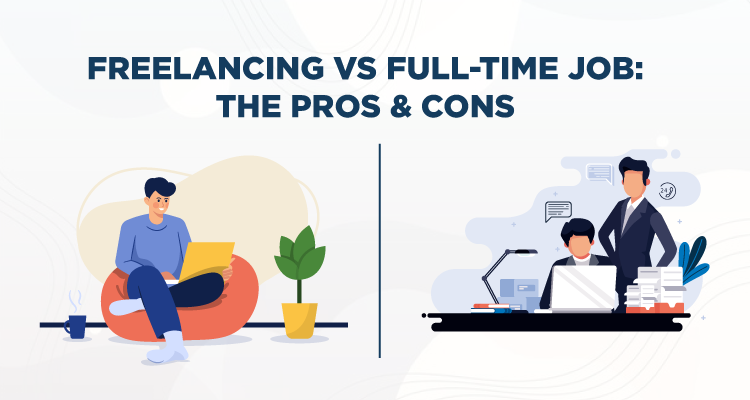The Pitfalls of Transitioning from Freelancing to Full-Time Employment: Why the Grass Is not Always Greener

In recent years, the rise of remote work has given birth to a new era of flexibility and autonomy, enabling individuals to break free from the traditional 9-to-5 office structure. Freelancing has become an attractive option for many, offering the promise of independence and control over one’s schedule. However, the allure of a stable full-time job after freelancing can be deceiving. In this article, we will explore why transitioning from freelancing to full-time employment might not be as advantageous as it seems.
Loss of Autonomy:
One of the primary reasons individuals choose freelancing is the autonomy it provides. Freelancers have the freedom to choose their projects, set their own schedules, and work from the comfort of their chosen environment. Transitioning to a full-time position often means surrendering this autonomy, as employees are required to adhere to a fixed schedule, work on assigned projects, and operate within the confines of company policies.
Fixed Income vs. Variable Earnings:
Freelancers enjoy the potential for unlimited income, depending on the number and type of projects they take on. Full-time employment, on the other hand, typically offers a fixed salary. While stability is a positive aspect, it may not be as financially rewarding as freelancing. Freelancers can experience significant financial growth by diversifying their projects, negotiating rates, and taking on additional work when opportunities arise.
Limited Work-Life Balance:
The flexibility inherent in freelancing allows individuals to tailor their work schedules to fit their personal lives, promoting a healthier work-life balance. In contrast, full-time employment often demands a rigid commitment to specific working hours, potentially leading to burnout and a diminished quality of life.
Creativity and Innovation Constraints:
Freelancers often thrive in environments that encourage creativity and innovation. The transition to full-time employment may expose individuals to bureaucratic constraints, rigid structures, and limitations on exploring unconventional ideas. The corporate hierarchy and adherence to established protocols can stifle the creativity that freelancers value.
Job Security Illusion:
While full-time employment may seem like a secure option, it doesn’t guarantee immunity from layoffs, downsizing, or corporate restructuring. Freelancers, with multiple clients and diverse income streams, may have a more resilient and adaptable financial model. In contrast, relying solely on one employer can be risky, especially in uncertain economic times.
Conclusion:
While the stability and benefits of full-time employment may be appealing, freelancers should carefully consider the potential drawbacks before making the transition. The loss of autonomy, fixed income structure, limited work-life balance, creative constraints, and the illusion of job security are factors that could impact the overall satisfaction and success of an individual in a full-time role. It’s essential to weigh these aspects against the perceived advantages of a traditional job to make an informed decision that aligns with one’s personal and professional goals.